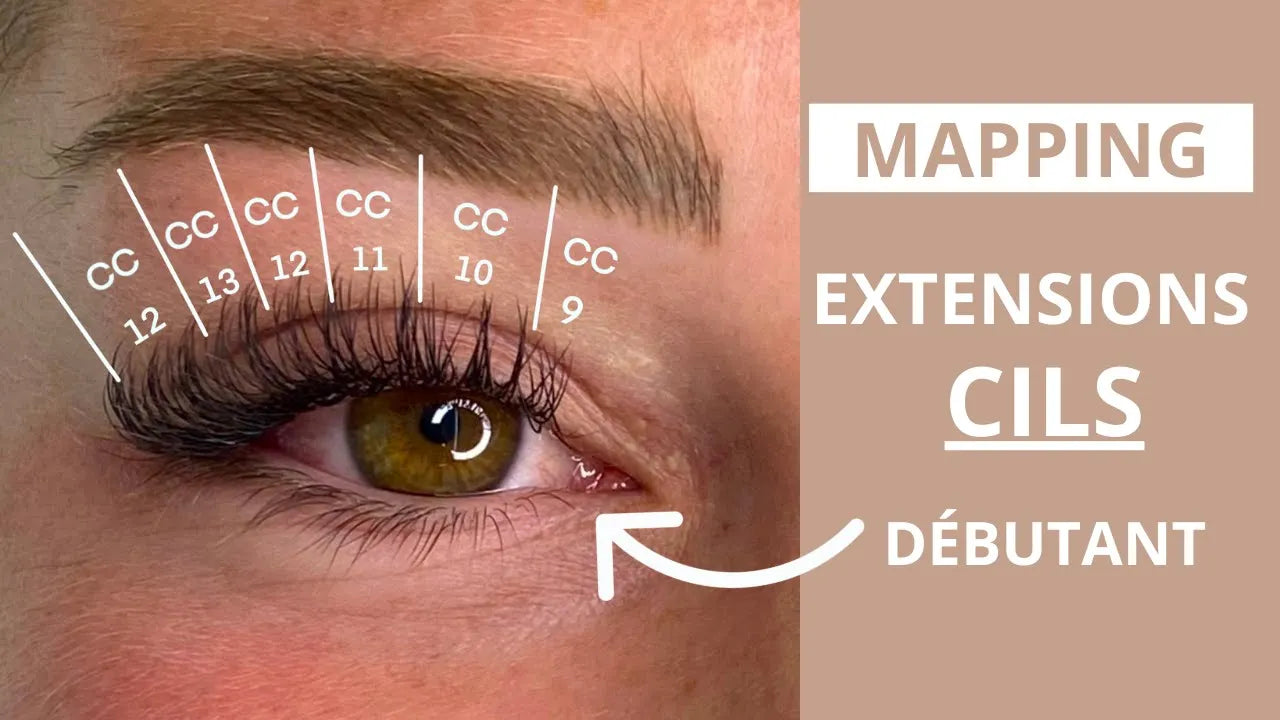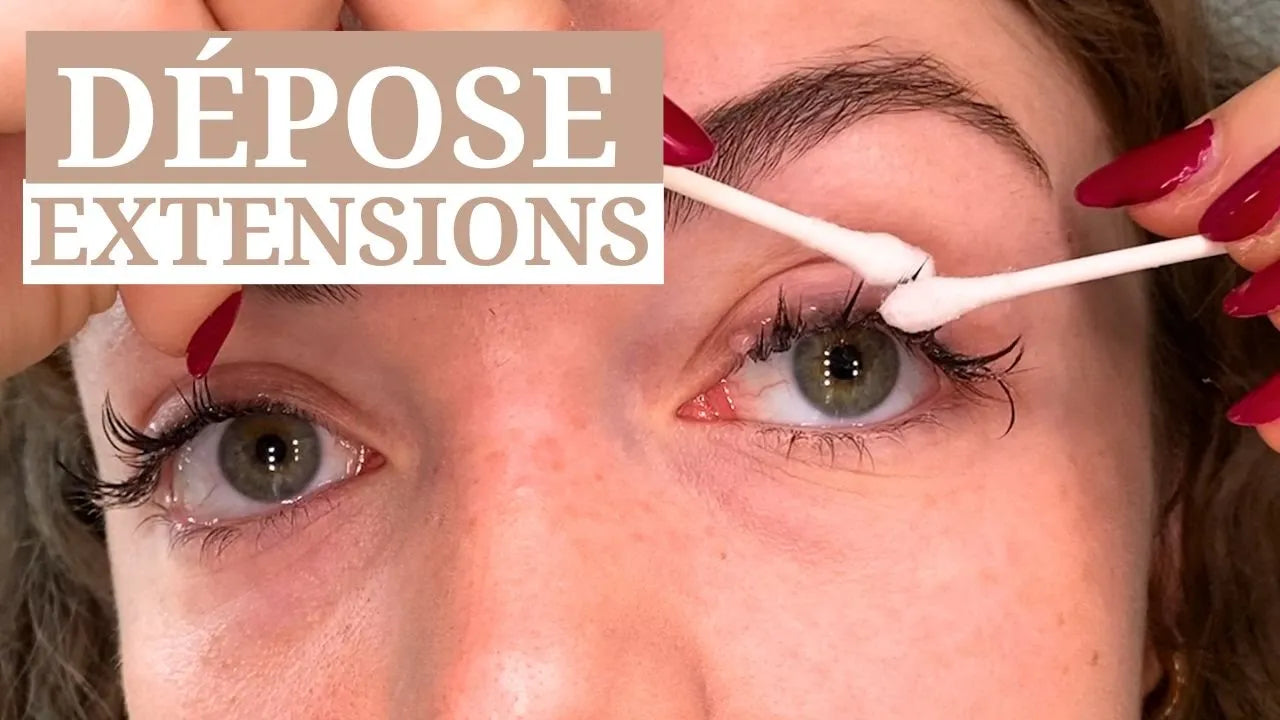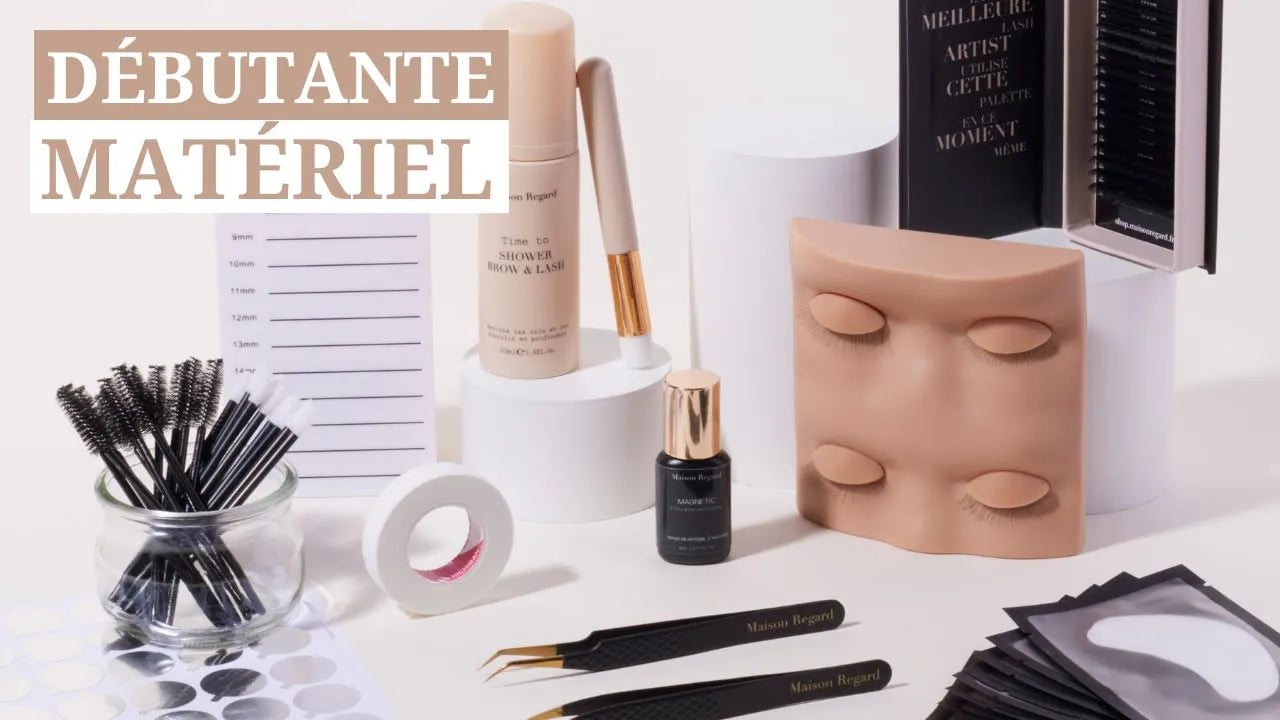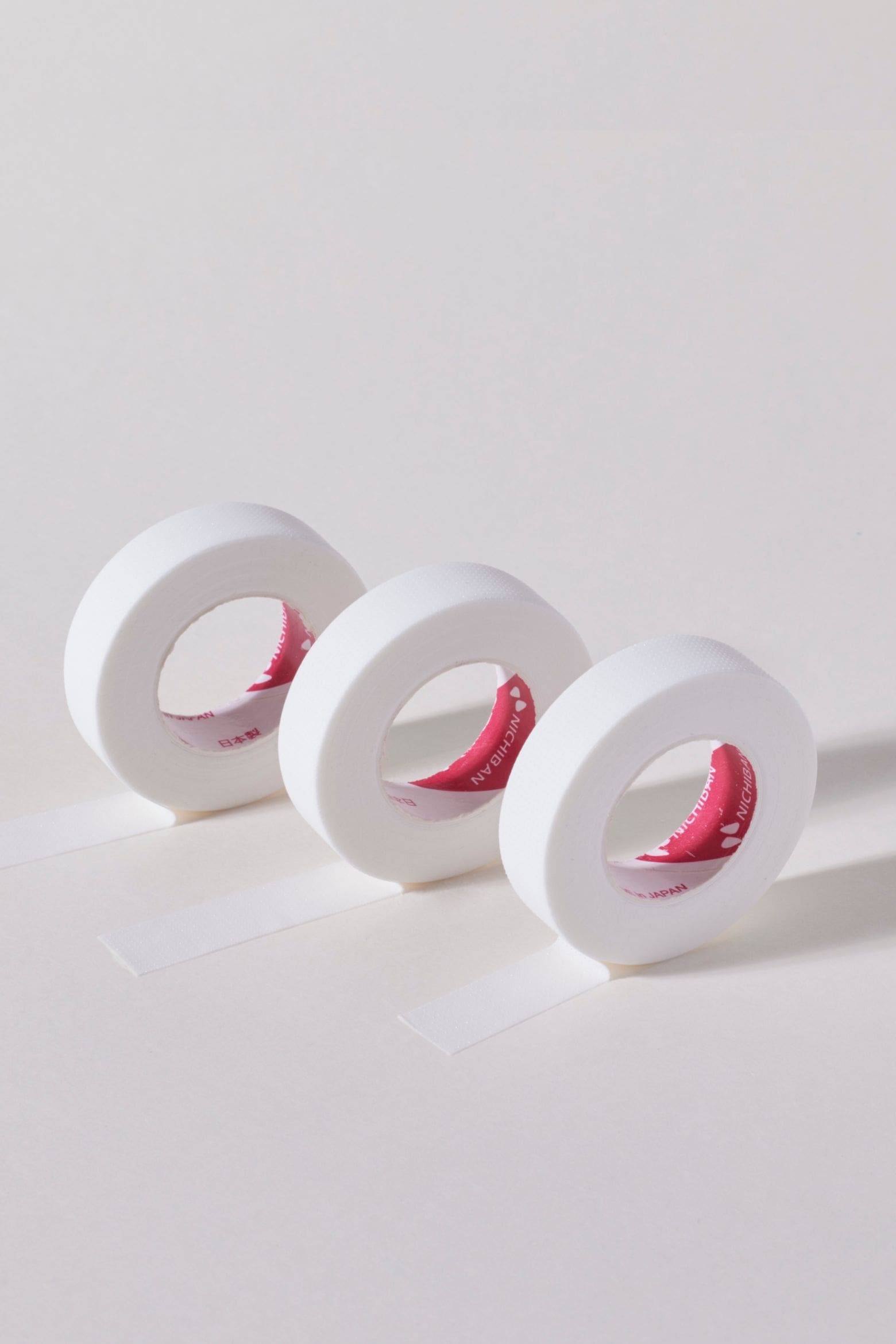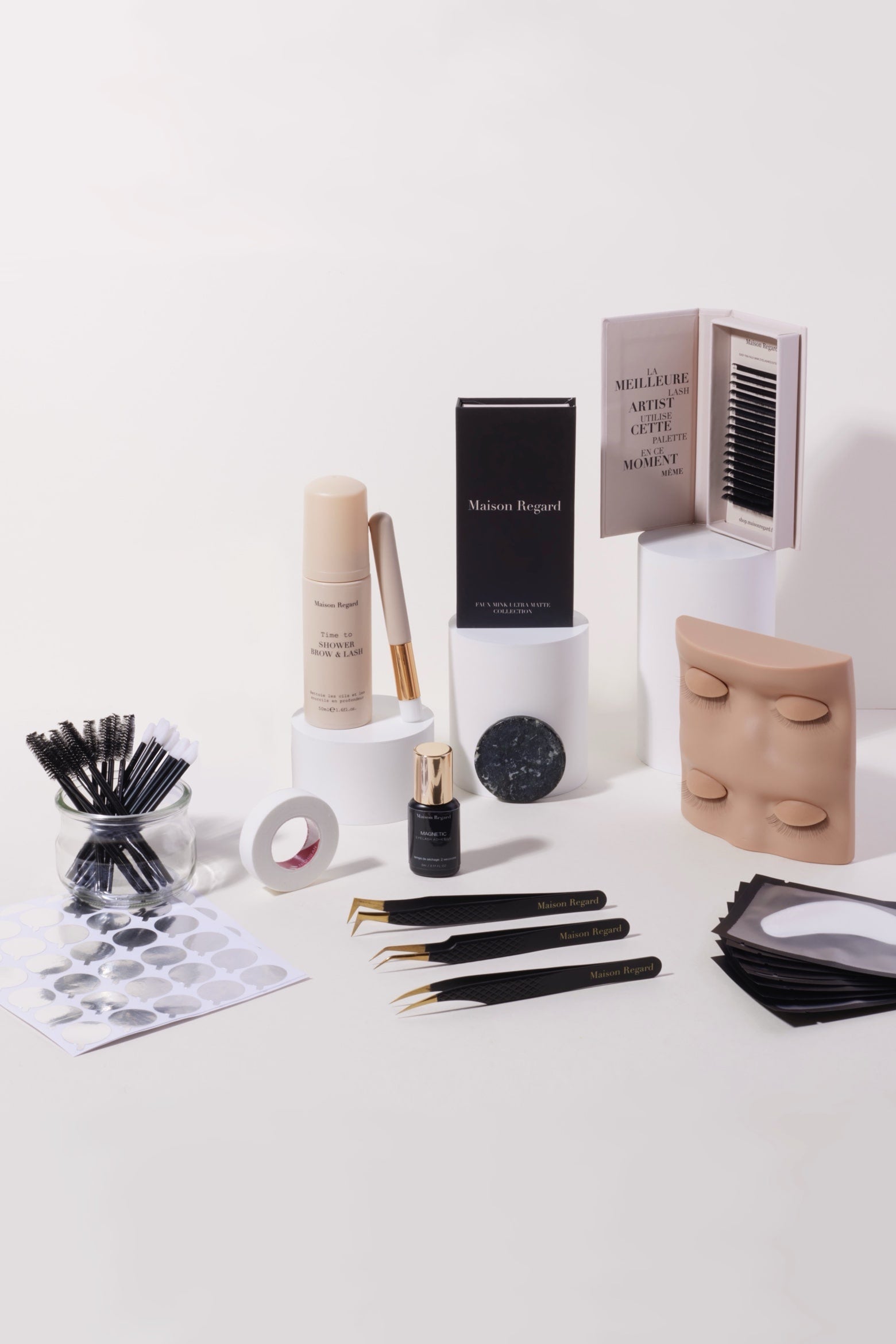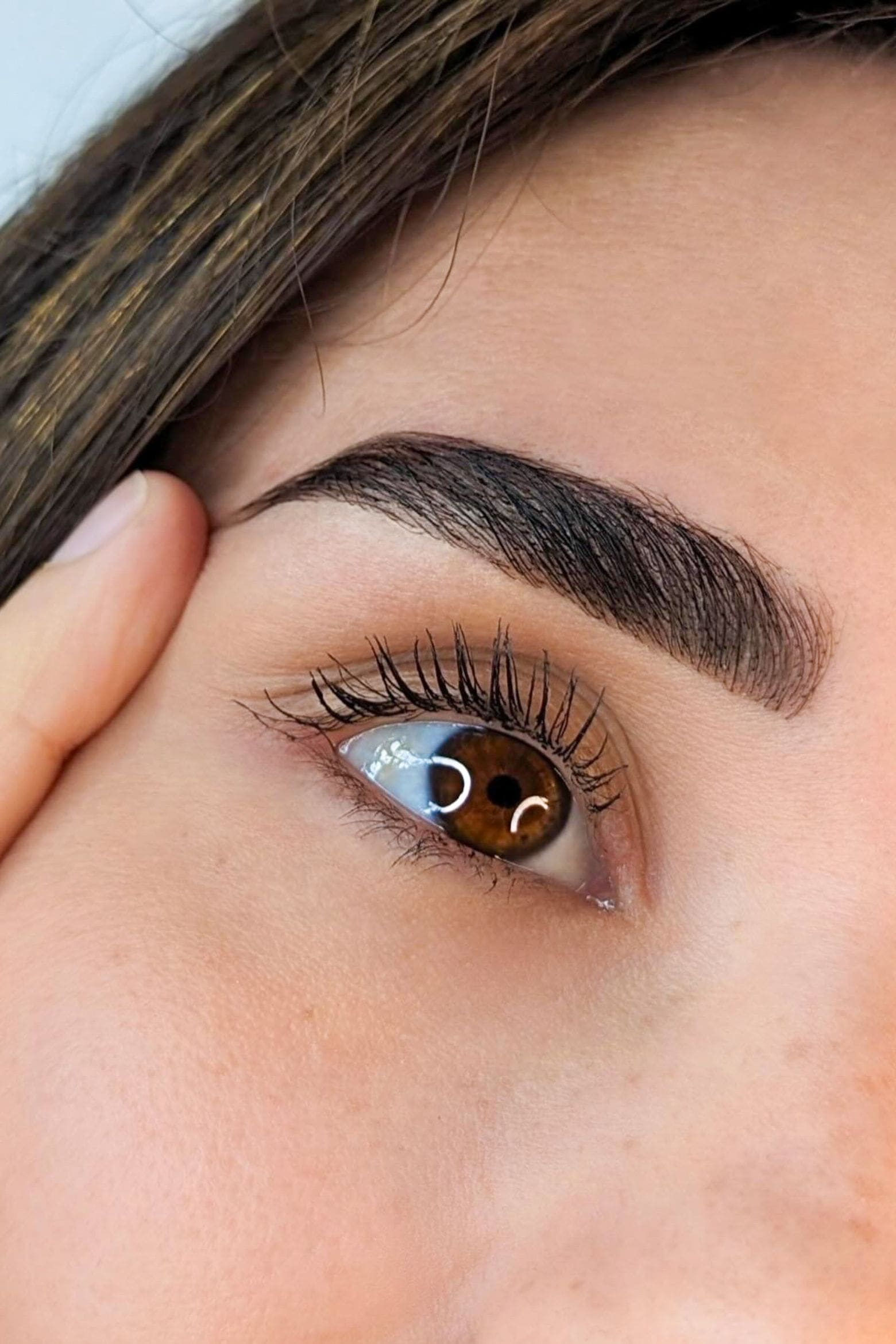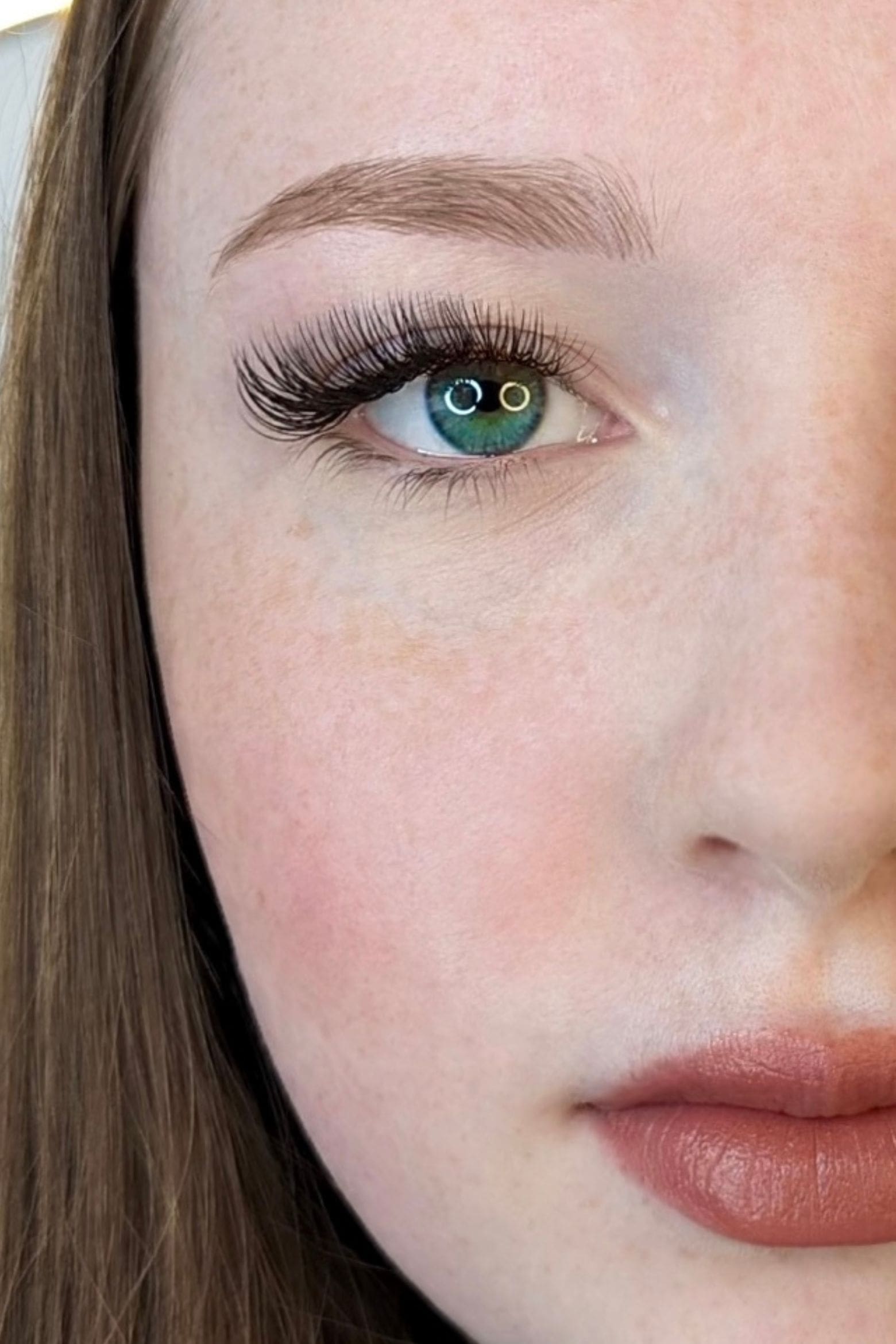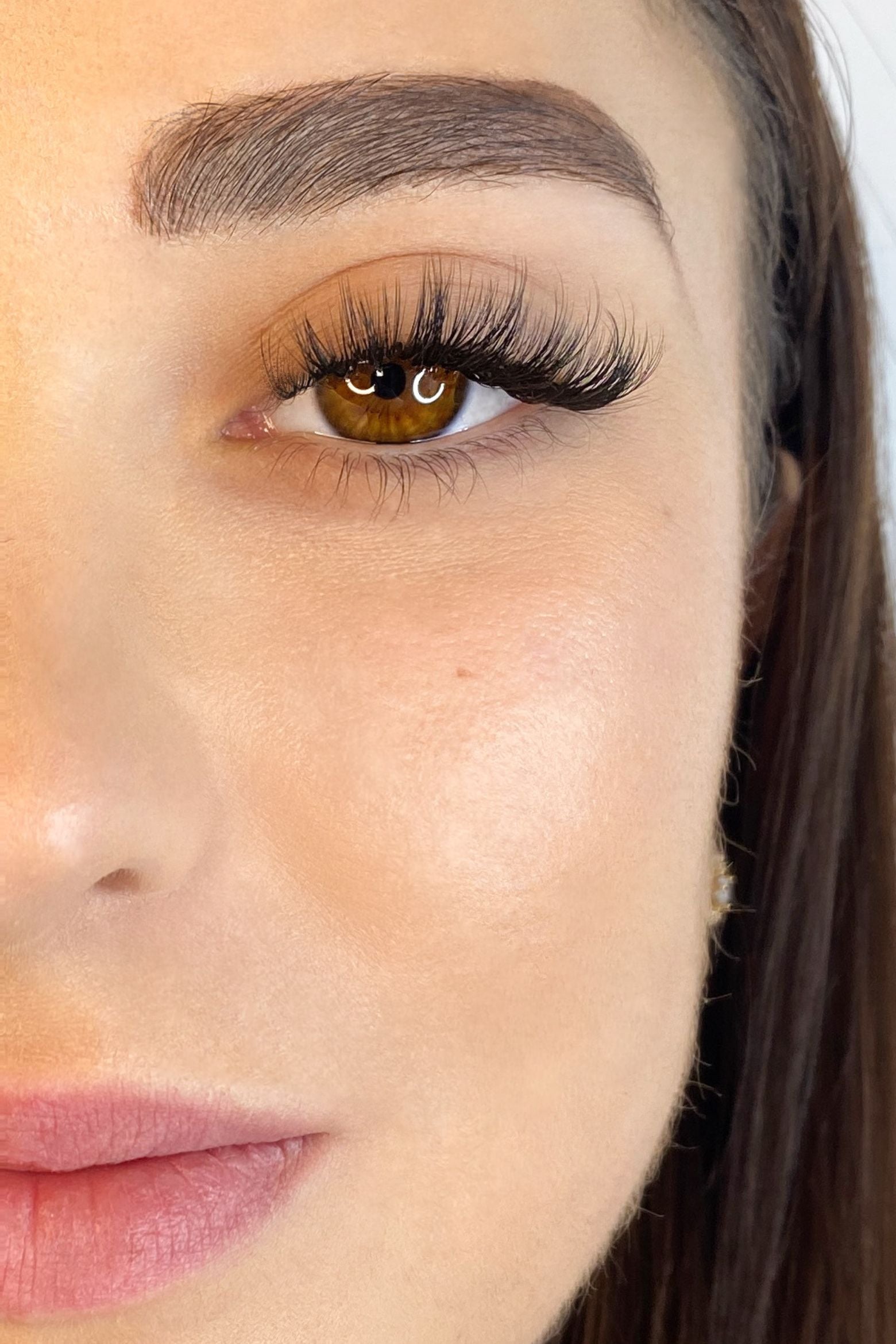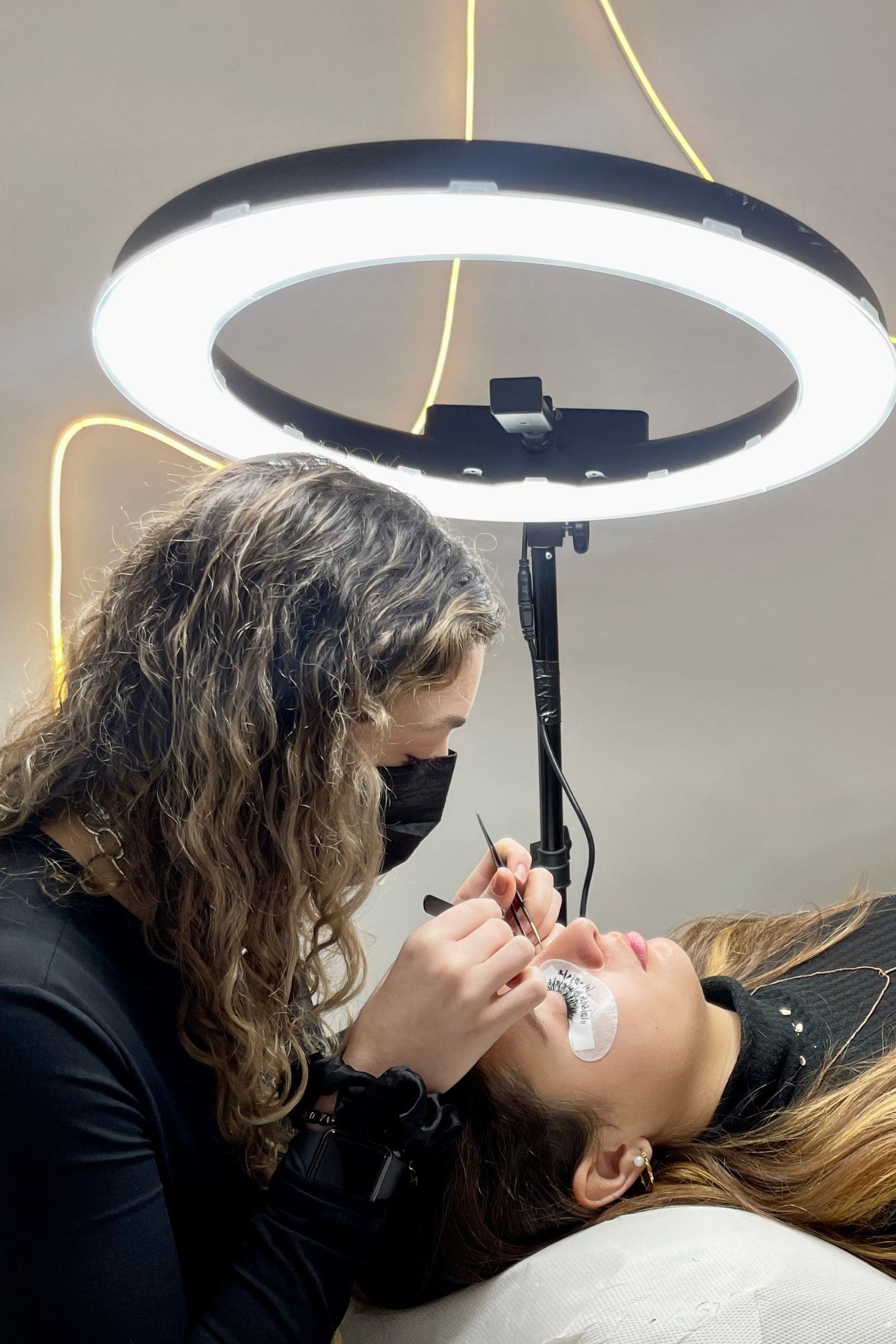Everything you need to know about mapping for eyelash extensions: tips, advice and professional training
Eyelash extension mapping is a crucial step in ensuring a harmonious application that's tailored to your clients' eye shape. It's a technique that involves defining the distribution of eyelash extension lengths and curves based on their eye shape. Mastering mapping allows you to enhance each client's gaze, creating a natural or more intense result, depending on their preferences.
In this article, we'll cover the basics of mapping, its variations, and give you tips on how to become an expert in eyelash extensions. We'll also show you why professional training is essential to mastering this technique, particularly with the e-learning video training courses offered by Maison Regard .
What is mapping in eyelash extensions?
Eyelash mapping is a method used by eyelash extension technicians to determine the length, curl, and type of extensions to use, as well as where to place them on the eye. This technique allows extensions to match the client's natural eye shape while meeting their style expectations.
A well-executed mapping takes into account several criteria, such as:
- The shape of the eyes (almond-shaped, globular, drooping, slanted, etc.).
- The positioning of natural eyelashes .
- The result desired by the client (natural look, doe-eyed effect, dramatic look, etc.).
Good mapping allows you to visually correct certain eye shapes and create a lifting, opening or volume effect.
Step 1: Observe the shape of your client's eyes
The first step to successful mapping is to observe your client's eye shape . There are several eye shapes, and each requires a specific mapping to achieve the best result:
- Almond Eyes : This eye shape is ideal because it works with almost any type of mapping.
- Drooping eyes : These require mapping that will "lift" them for a lifted effect.
- Protruding eyes : Protruding eyes need mapping that softens the look and minimizes the bulging effect.
- Slanted eyes : These eyes often need mapping that opens the gaze.
- Small or large eyes : The mapping must be adjusted to balance the proportions of the gaze.
Observing and analyzing the shape of your client's eyes is a skill that develops over time. One practice tip is to observe the people around you and try to determine their eye shape. This will help you be more responsive and accurate in your diagnoses.
Step 2: Choose the right mapping type
There are different types of mapping that suit different eye shapes and expectations. The main mappings are:
-
Squirrel : This mapping creates a lifted and elongated effect. It works well for drooping or bulging eyes, as it helps "pull" the gaze upward.
-
Open Eyes : This type of mapping enlarges the eyes by placing the maximum length in the center of the eye. It is perfect for people with slanted eyes or who want an open effect.
-
Doll Eyes : Similar to open eyes, but with a more pronounced effect. This mapping gives an intense and dramatic look, perfect for those who want a visible result.
-
Fox Eyes : Very popular, this mapping stretches the eyes outward, creating a "doe-eyed" effect. It's ideal for clients looking for a glamorous look.
At first, it can be difficult to choose the right mapping for each client. However, once you master the basics, you can adjust each mapping to suit the specific morphology of your eyes.
Squirrel Mapping: A Must-Have
Squirrel Mapping is an excellent choice for most clients, especially those who want a natural-looking yet slightly lifted result. This mapping is versatile and achieves a harmonious effect that suits most eye shapes. If you're a beginner, we recommend starting with this mapping, as it's easy to adapt and minimizes the risk of errors.
Step 3: Adapt the mapping according to the correction needs
Once you've determined your client's eye shape, the next step is to choose the mapping that will enhance her eyes. For example:
- For bulging eyes , Squirrel or Fox Eyes can help stretch and refine the look.
- For drooping eyes , Squirrel is ideal, as it naturally lifts the outer corner of the eye, creating a lifting effect.
- For slanted eyes , Open Eyes or Doll Eyes mapping is perfect for opening the eyes and creating a widening effect.
Adapting the mapping according to the specific needs of each client allows you not only to improve the aesthetic aspect of the pose, but also to visually correct certain eye shapes for a more balanced result.
Step 4: Choose the right curvature
Choosing the right curl is just as important as the mapping itself. The curl of eyelash extensions plays a crucial role in the final result. Here are the most common curls:
-
C Curl : It is slightly more curved than natural lashes and gives a subtle and natural effect. Ideal for a discreet look.
-
CC Curl : More pronounced than the C curl, it adds more volume while remaining quite soft. Perfect for an elegant but visible effect.
-
D Curl : Very intense, this curl is used for dramatic looks. However, it is not suitable for all types of natural lashes, especially those that are very straight or very short.
At first, it's recommended to limit yourself to two or three different curls to avoid complicating the process. Then, you can adjust the curls based on the client's natural lashes and their expectations.
Importance of eyelash extension training
Mastering eyelash mapping and extension techniques requires practice and specific skills. Professional training is essential for this. At Maison Regard , we offer comprehensive e-learning video training courses , accessible to everyone, whether you're a beginner or an experienced technician.
1. Learn at your own pace
The e-learning video training allows you to learn how to apply eyelash extensions at your own pace, with detailed instructional videos, diagrams, and real-life mapping examples. You can replay the videos as many times as necessary to fully understand each step of the process.
2. Personalized support
In addition to the videos, you'll benefit from personalized support through written or voice exchanges via WhatsApp. This allows you to get answers to your questions in real time and receive specific advice on your progress.
3. A complete training kit
Each training registration includes a complete eyelash extension kit . This kit contains all the extension palettes, tweezers, glues, and other accessories needed to perform between 5 and 10 applications . This allows you to train directly at home and practice the techniques learned.
Conclusion
Eyelash extension mapping is an essential technique to master to offer your clients a personalized result, adapted to their morphology and expectations. Whether you're a beginner or looking to perfect your technique, Maison Regard 's e-learning video training is the ideal solution to develop your skills at your own pace and allow you to offer quality services.
Remember that every client is unique, and it's important to tailor the mapping, lengths, and curls to their individual eye shape and preferences. With professional training and the right equipment, you can quickly become an expert in eyelash extensions and offer your clients a beautiful, long-lasting look.

